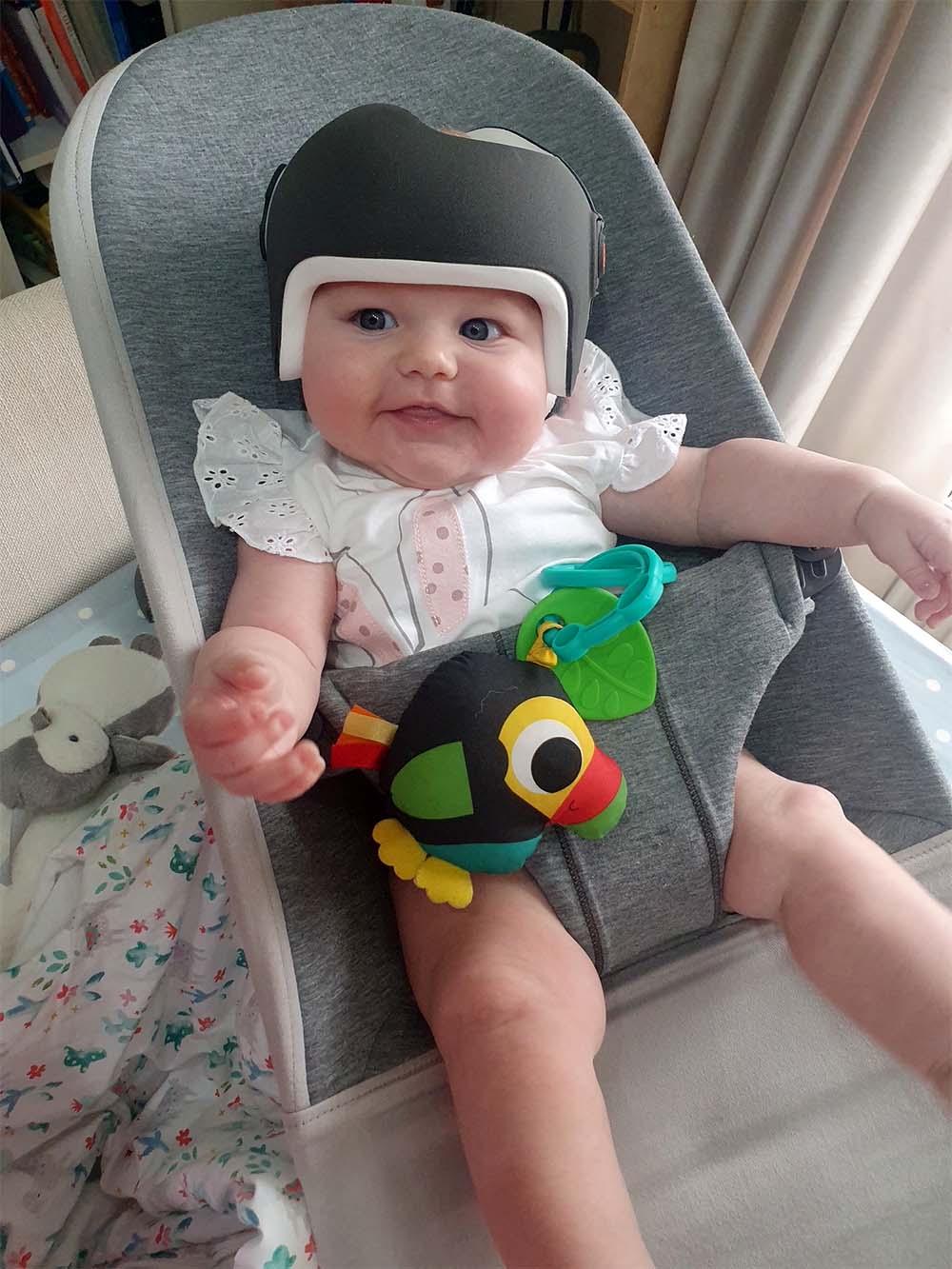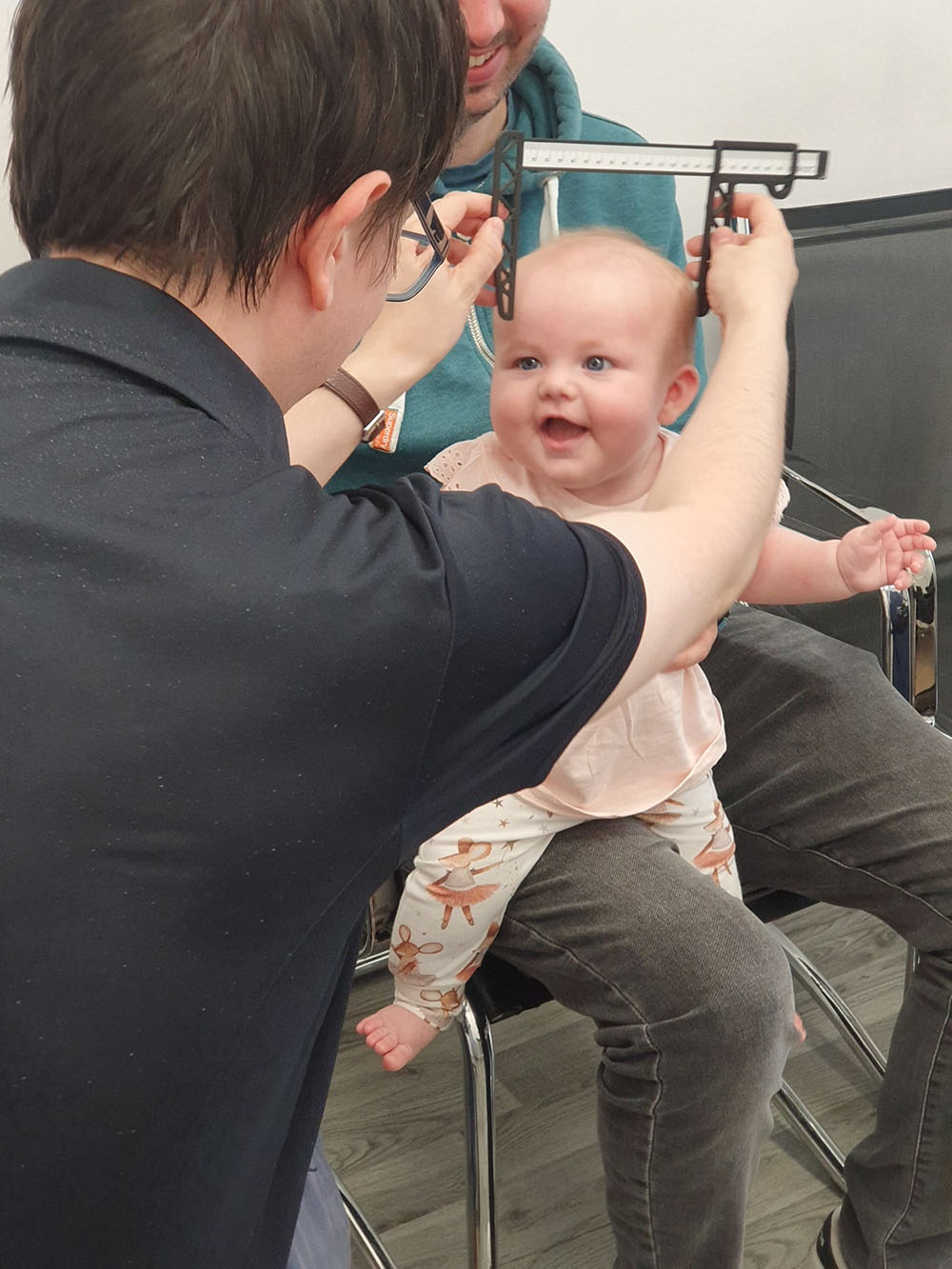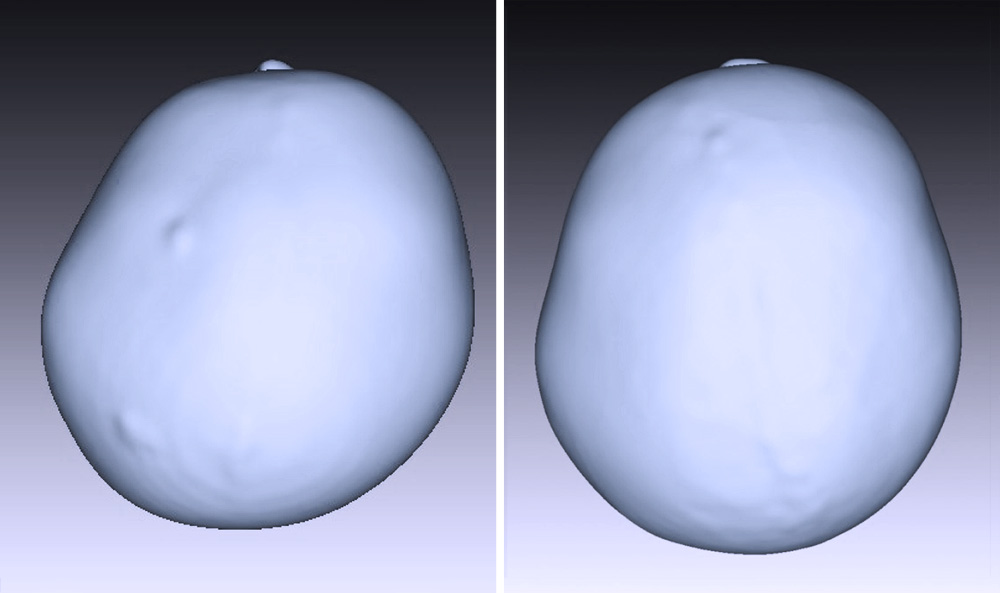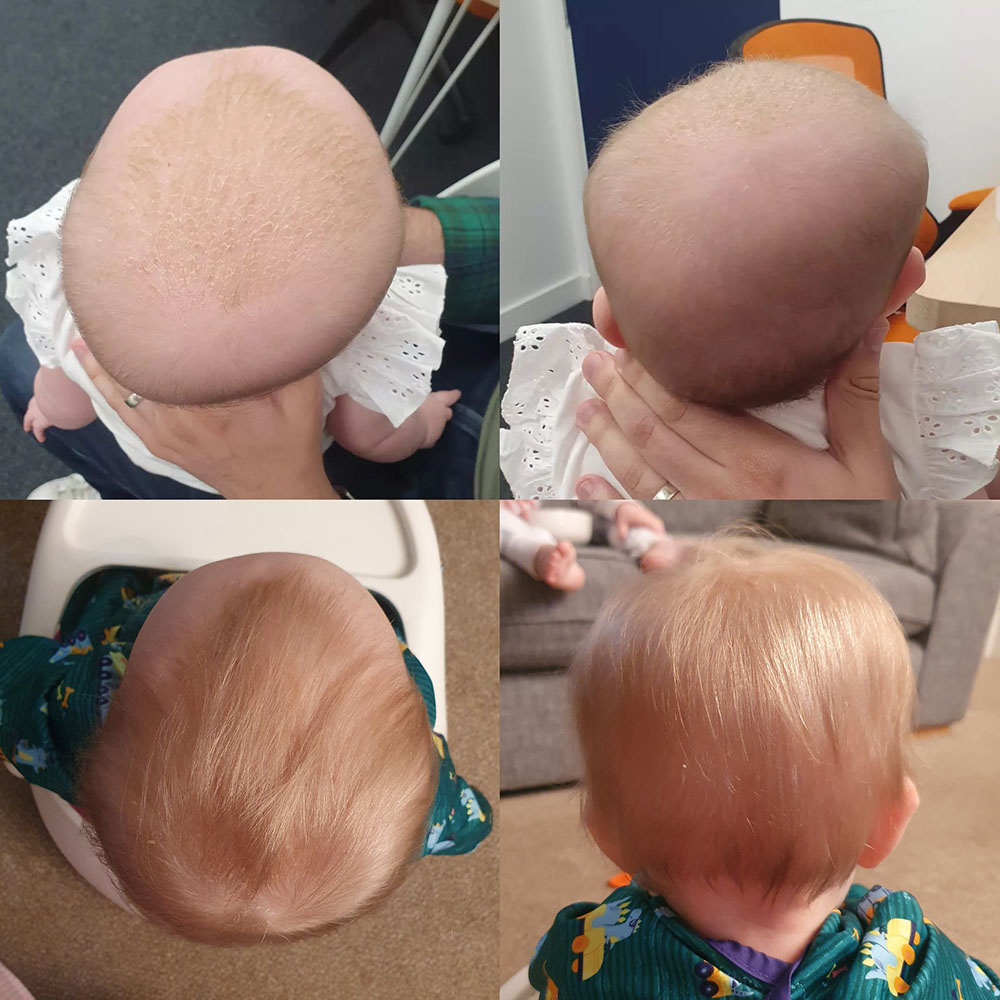
21 March 2024
Gemma, Rosie’s mum, first noticed that Rosie's head was misshapen when she was about 2 weeks old. "By 4 weeks old, I was very aware that Rosie was favouring one side and the flattening was becoming worse. We took Rosie to see a Cranial Osteopath, who felt she had mild torticollis and gave us lots of exercises to help resolve it and repositioning techniques to reduce the plagiocephaly. I was aware of plagiocephaly from when I did my degree. I work as an NHS Midwife, so I have come across it before, but as we only care for babies up until 28 days it is not something we come across very often.”
At six weeks, Gemma took Rosie to the family GP: “I was told not to worry, and that Rosie’s head shape would resolve itself by the age of two. Before I started doing my own research into Plagiocephaly this was something that I believed myself. In mild cases this can absolutely be the case. But if Plagiocephaly is classed as severe or very severe, it is highly unlikely that the head shape will return to normal measurements by the age of two.”

Baby Rosie during her helmet therapy fitting appointment
The LOCband is non-invasive and works by applying gentle, constant pressure over the areas of the baby’s skull that are most prominent while allowing unrestricted growth over the flattened areas. The band consists of a soft foam layer inside a thermoplastic shell. As the baby grows, the band will be adjusted frequently to gently guide the skull into a more symmetrical shape.
The optimum age for treatment is between four and seven months.
This is because the skull is most malleable at this age and improvements to head shape tend to take less time and are more dramatic. That is not to say that helmet therapy should be ruled out if the baby is older than seven months. Routinely, babies up to the age of 16 months can be treated very successfully.
The cut off age is around 18 months when the fontanelles (soft spots on the head) are no longer malleable. As babies grow and develop at different rates, it is always worth checking if you are not sure. There have been cases where a baby’s fontanelles have not fused yet by the age of 18 months, who have achieved successful, but less-marked results with cranial remoulding therapy.
Yes - All babies that have completed their course of treatment with us have achieved a measurable improvement in head shape. However, you don’t have to take our word for it.
Recent independent research conducted by a University Hospital in Germany has endorsed the treatment for babies with moderate or severe plagiocephaly.
A larger, retrospective study has just been published that found complete correction was achieved in 94.4% of babies treated with helmet therapy.
The results were conclusive: repositioning achieved acceptable correction in 77.1% of cases, but 15.8% were moved onto helmet therapy because re-positioning was not working. Meanwhile, 94.4% of the infants who started in the helmet-treated group achieved full correction, as did 96.1% of those who were transferred from the repositioning group into the helmet-treated group.
Further information can be found on our Plagiocephaly Research page.
This is very much dependent on how fast your baby is growing. The faster the growth, the more frequently your baby will be seen so that the helmet can be adjusted. In general, reviews will happen at two to four-week intervals.
The price of treatment covers:
When Rosie was about 10 weeks old Gemma was becoming increasingly concerned as repositioning was not making any difference to Rosie’s head shape.” I started doing more thorough research into Plagiocephaly and treatment for it. When we were looking at clinics, I really liked that LOC do everything in house and found the blogs helpful in making my decision. Fortunately, my own health visitor was aware of the condition and was very supportive when I told her I was starting Rosie with helmet therapy. It was something she had seen before and said how successful it had been for another baby she had cared for.”
Rosie was assessed at LOC’s Kingston clinic on 25 July 2023. Orthotist George Coles measured Rosie’s head and did confirm that she had very severe Plagiocephaly. The key measurement is one that measures cranial asymmetry.
This compares the right and left diagonals at 30 degrees from the centre of the head (front to back). Subtracting the one from the other gives the asymmetry value. Less than 6mm is regarded as being within the normal range of head shape, anything over 12mm is deemed to be very severe. Rosie’s asymmetry was 16mm. Gemma recalls the appointment:
“When we went for our initial assessment, the treatment was clearly explained and all our questions were answered without hesitation, which was very reassuring. Our orthotist George was very honest and upfront and when Rosie was diagnosed with severe plagiocephaly, there was absolutely no pressure on us to go ahead with the treatment, but it was recommended based on the severity of her plagiocephaly.
I think it is appropriate to talk about the cost of the treatment; it seemed like a big outlay at first. Now having gone through the treatment and the number of appointments and seen the results, we feel it was good value for money. It was very useful having the full upfront cost at the start as there were no hidden, unexpected additional fees and having access to that information on the website before the initial appointment meant we knew what to expect.”
Rosie was fitted with LOC’s cranial remoulding helmet, the LOCband Lite in August 2023. It has a lightweight and ventilated design and is 3D printed.
Some parents worry about how their baby will cope with wearing a helmet and Gemma did have some concerns herself.
“Rosie was a superstar! It took a couple of days for her to get used to the helmet (mainly at night). However, if anything she then started to embrace it and would be looking for it when it was removed for her hour break. Another concern was judgement from the public. I was really anxious people would look and stare when we went out with Rosie in her helmet and make judgements that as parents, we had somehow contributed to her having plagiocephaly. This was something I got over very, very quickly. If anything, Rosie got more attention with her helmet and people would often come and chat and tell us how beautiful she was.”

Rosie's head scans before treatment show an asymmetry value of 16mm, and after with a value of 2mm

Before and after shots of Rosie's head shape
“In conclusion, we would like to make a special mention of George. We were so glad we had George providing Rosie's treatment. George has such an approachable and relaxed demeanour. He is informative and knowledgeable, and we always felt he strived to do his best for Rosie. Nothing was ever too much trouble. We loved how much he engaged with Rosie, and she was always very pleased to see him. Overall, we found George, the lovely receptionist, Beverley, and LOC so welcoming, that we always felt at ease, and it made what could have been a stressful process feel the opposite.”
Rosie was discharged on 31 January 2024 after six months of treatment. The final scan showed that her asymmetry had been reduced from 16 mm to 2mm, well within the range of normal head shapes.
If you’re worried about your baby’s head shape, get in touch today. You can fill out our free flat head diagnosis form or contact us to book a free consultation with an orthotist.

Rosie in her LOCBand Lite plagiocephaly helmet